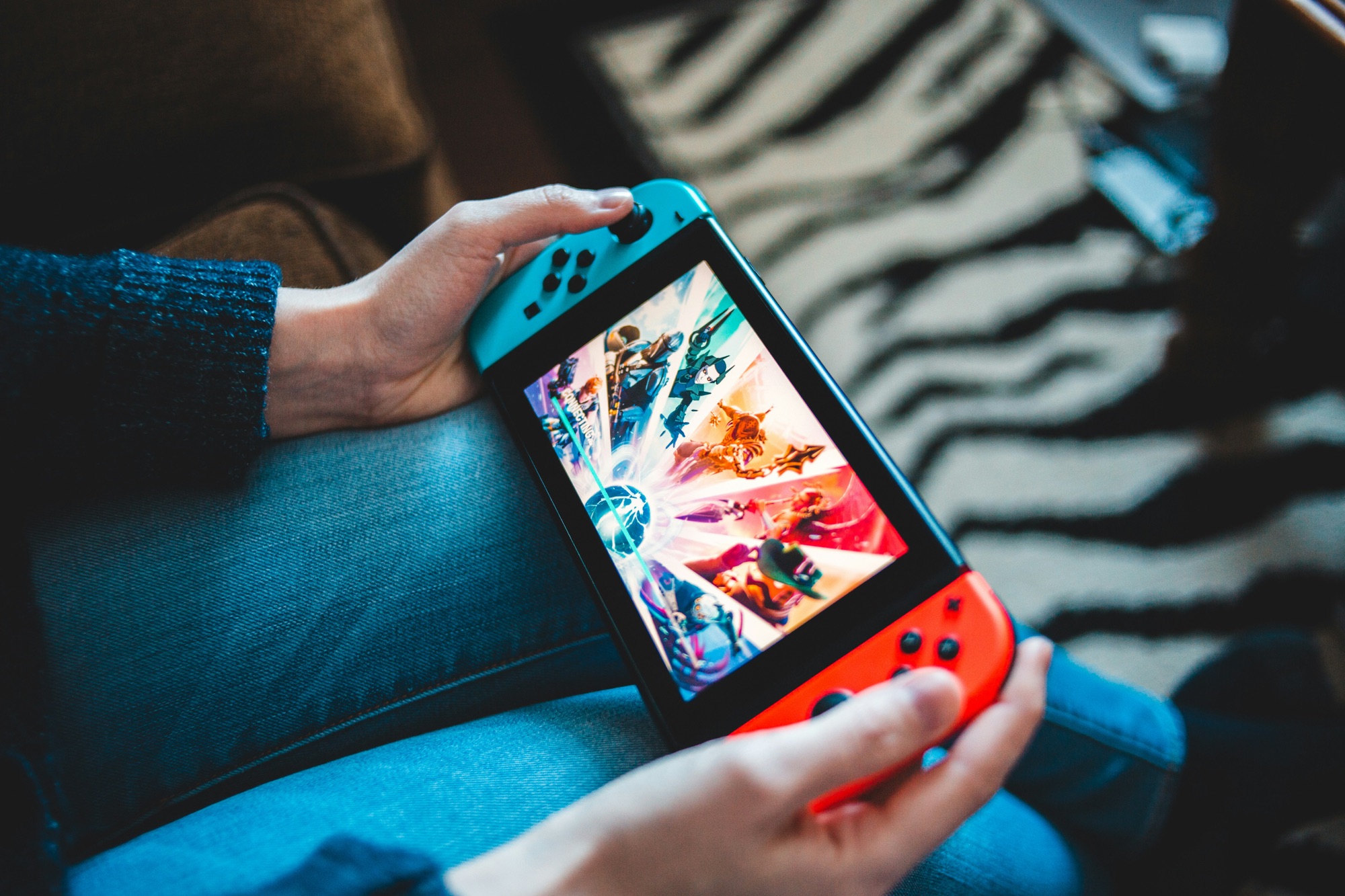Playing video games is a popular activity that can be both entertaining and immersive. However, for some people, spending time gaming can result in headaches that range from mild discomfort to severe pain. Whether you’re a casual gamer or a dedicated enthusiast, understanding why you experience headaches while gaming can help you take steps to prevent them. In this article, we’ll explore the common causes of gaming-related headaches, the symptoms to watch for, and how to minimize the likelihood of these headaches occurring.
Eye Strain and Digital Eye Strain
One of the most common reasons people experience headaches while gaming is digital eye strain, also known as computer vision syndrome. Staring at a screen for extended periods causes your eyes to work harder, leading to discomfort and strain.
How It Happens
Your eyes are constantly adjusting to the brightness, contrast, and small details on the screen, especially during fast-paced games. This continuous effort can cause the muscles around your eyes to become fatigued, resulting in a headache. Low lighting, improper screen settings, and sitting too close to the screen can exacerbate the problem.
Associated Symptoms
In addition to headaches, you might experience dry eyes, blurred vision, double vision, and sensitivity to light.
What to Do
To reduce eye strain, follow the 20-20-20 rule: every 20 minutes, take a 20-second break and look at something 20 feet away. Adjust the brightness and contrast of your screen to comfortable levels, and ensure your gaming area is well-lit to reduce strain on your eyes. Positioning your monitor about an arm’s length away and slightly below eye level can also help. Consider using artificial tears to alleviate dryness or investing in a monitor with a higher refresh rate for smoother visuals.
Blue Light Exposure
The blue light emitted by screens can be a significant factor in triggering headaches, especially during extended gaming sessions. Blue light is known to cause eye discomfort and can also interfere with sleep patterns if you’re gaming late at night.
How It Happens
Prolonged exposure to blue light overstimulates your eyes and can cause eye strain, leading to headaches. Blue light can also disrupt the production of melatonin, the hormone responsible for sleep, making it harder to fall asleep and increasing the risk of a headache the next day.
Associated Symptoms
Blue light-related headaches are often accompanied by eye discomfort, trouble falling asleep, and sometimes neck or back pain.
What to Do
Consider using blue light-blocking glasses or enabling blue light filters on your devices, especially if you’re gaming at night. Reducing screen brightness and adjusting the color temperature to warmer tones can also help minimize the effects of blue light. There are many software solutions available that automatically adjust the screen’s color temperature based on the time of day, like f.lux or Night Shift on Apple devices. Incorporating these tools into your gaming routine can be a game-changer.
Poor Posture and Muscle Tension
Your posture while gaming can significantly contribute to whether or not you experience headaches. Sitting for long periods in a hunched position or with improper neck and back alignment can lead to tension headaches.
How It Happens
Poor posture puts strain on the muscles in your neck, shoulders, and upper back. Over time, this tension can radiate to your head, causing a headache. If your gaming setup isn’t ergonomically designed or you remain in the same position for hours, the strain can worsen.
Associated Symptoms
You may notice stiffness or pain in your neck and shoulders, along with a dull, aching headache that feels like pressure around your head.
What to Do
Ensure your gaming setup promotes good posture. Your screen should be at eye level, and your chair should support your lower back. Take breaks to stretch and move around every 30 to 60 minutes to relieve muscle tension. Investing in an ergonomic chair and desk can make a significant difference. Simple exercises, such as neck rotations and shoulder shrugs, can help maintain flexibility and reduce strain. Consider using a standing desk converter, which can alternate your work position and reduce prolonged sitting.
Bright or Flickering Screens
Video games often feature bright colors, flashing lights, and rapid movements, which can trigger headaches in individuals sensitive to visual stimuli. This is especially true if you are prone to migraines or suffer from light sensitivity.
How It Happens
Flickering or rapidly changing images can overwhelm your brain’s visual processing system, leading to headaches. Bright lights, high contrast, and rapid in-game movements can also strain your eyes and contribute to discomfort.
Associated Symptoms
Sensitivity to light, visual disturbances (like seeing spots or halos), and nausea may accompany these headaches.
What to Do
If you’re sensitive to visual stimuli, consider adjusting your game’s brightness settings or using motion blur reduction features. Taking regular breaks and avoiding visually intense games can also help prevent headaches. Some games allow you to customize visual settings extensively; take advantage of these features to reduce visual stress. Additionally, ensuring your monitor has a high refresh rate can help reduce flicker-induced headaches. If necessary, consult with a healthcare professional about potential treatments for light sensitivity, such as medications or specialized glasses.
Dehydration
It’s easy to get absorbed in a game and forget to drink water, but dehydration is a common cause of headaches. Long gaming sessions without sufficient hydration can lead to headaches that worsen as time goes on.
How It Happens
Dehydration leads to reduced blood volume, which in turn decreases the flow of oxygen to your brain. This can trigger a headache, especially if you’re focused on the game for extended periods. Mental exertion during intense gaming sessions can further deplete your hydration levels.
Associated Symptoms
Dry mouth, dizziness, fatigue, and overall lethargy are often signs of dehydration-related headaches.
What to Do
Keep a water bottle nearby and make a habit of drinking regularly while gaming. Staying hydrated not only helps prevent headaches but also improves your overall concentration and performance. Aim for at least 8 cups of water a day, adjusting based on your activity level and environment. If you tend to forget to drink water, consider setting reminders or using apps designed to track your water intake.
Caffeine Overconsumption
Many gamers rely on energy drinks, coffee, or other caffeinated beverages to stay alert during long gaming sessions. While caffeine can enhance focus, too much of it can lead to headaches.
How It Happens
Caffeine is a stimulant that can constrict blood vessels in your brain. When the effects wear off, these blood vessels can dilate rapidly, leading to a withdrawal headache. If you frequently consume caffeine and then skip your usual dose, it can also trigger a headache.
Associated Symptoms
Caffeine-related headaches are often accompanied by irritability, difficulty concentrating, and fatigue.
What to Do
Monitor your caffeine intake and avoid over-reliance on energy drinks or coffee. Opt for healthier alternatives, such as water or herbal teas, and be mindful of the amount of caffeine you consume during gaming sessions. Gradually reducing your caffeine consumption can help minimize withdrawal symptoms. Consider replacing some caffeinated drinks with decaffeinated versions or naturally caffeine-free options, like chamomile or peppermint tea.
Mental and Physical Fatigue
Gaming can be mentally and physically demanding, especially during long or intense sessions. The combination of focus, quick decision-making, and continuous engagement can lead to fatigue, which in turn can trigger headaches.
How It Happens
The strain on your brain from concentrating on complex gameplay, combined with physical tension from sitting for long periods, can lead to fatigue-induced headaches. Mental exhaustion can also make you more sensitive to other headache triggers, such as bright lights and screen glare.
Associated Symptoms
Mental fatigue may manifest as irritability, reduced concentration, and a sense of overwhelming tiredness.
What to Do
Take regular breaks during gaming sessions to rest both your mind and body. Short breaks every hour to stretch, relax, and give your eyes a rest can help prevent fatigue-related headaches. Incorporating relaxation techniques like deep breathing can also help manage tension. Engage in activities outside gaming that promote relaxation and mental clarity, such as meditation, yoga, or a leisurely walk. Balancing gaming with other forms of entertainment can also reduce fatigue.
Additional Strategies for Preventing Gaming-Related Headaches
Customize Your Gaming Environment
Creating a comfortable and personalized gaming environment can significantly reduce the risk of headaches. Here are some tips:
- Lighting: Use soft ambient lighting to complement your screen and reduce glare. Avoid direct overhead lights or windows behind your screen that can create reflections.
- Temperature: Keep your gaming area at a comfortable temperature. Too hot or too cold environments can contribute to physical discomfort and headaches.
- Sound Levels: High volume can strain your ears and contribute to headaches. Use quality headphones with noise-cancellation features to minimize the need for high volumes.
Consider Your Gaming Schedule
Playing games at certain times can influence the likelihood of developing headaches. Consider these scheduling tips:
- Limit Nighttime Gaming: Late-night gaming can disrupt sleep patterns and increase sensitivity to light and sound. Set a cut-off time to ensure you get adequate rest.
- Balance Gaming with Breaks: Plan your gaming sessions with built-in breaks. Use these breaks to hydrate, stretch, and rest your eyes.
Monitor Your Health
Keeping an eye on your overall health can help prevent gaming-related headaches:
- Regular Exercise: Regular physical activity boosts circulation and can alleviate tension headaches. Aim for at least 30 minutes of moderate exercise most days of the week.
- Healthy Diet: A balanced diet supports brain function and energy levels. Avoid skipping meals and opt for nutrient-rich foods like fruits, vegetables, and whole grains.
Seek Professional Advice
If headaches persist despite taking preventive measures, seeking professional advice is crucial:
- Consult a Healthcare Provider: Persistent or severe headaches warrant a discussion with a healthcare provider. They can help identify underlying causes and recommend appropriate treatments.
- Eye Examination: Regular eye exams can detect vision issues that contribute to eye strain and headaches. Prescription glasses or contact lenses might be necessary to improve your gaming experience.
By understanding the various factors that contribute to gaming-related headaches and implementing these practical strategies, you can enjoy gaming without discomfort. Remember, balance is key, and taking care of your physical and mental health will enhance not only your gaming experience but your overall well-being.




